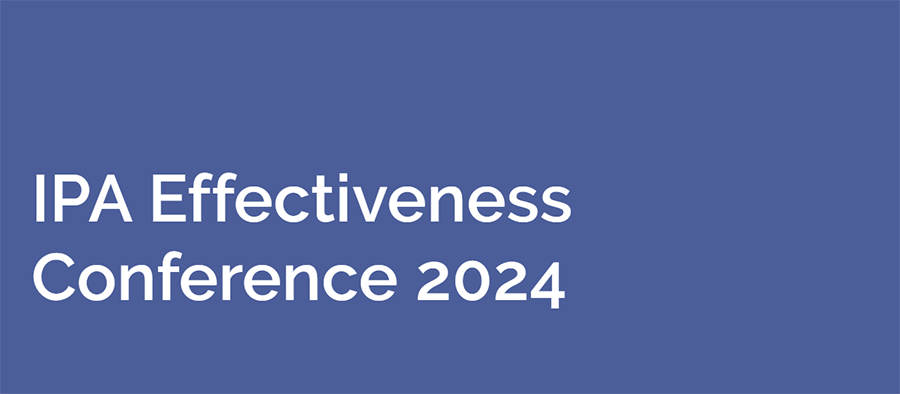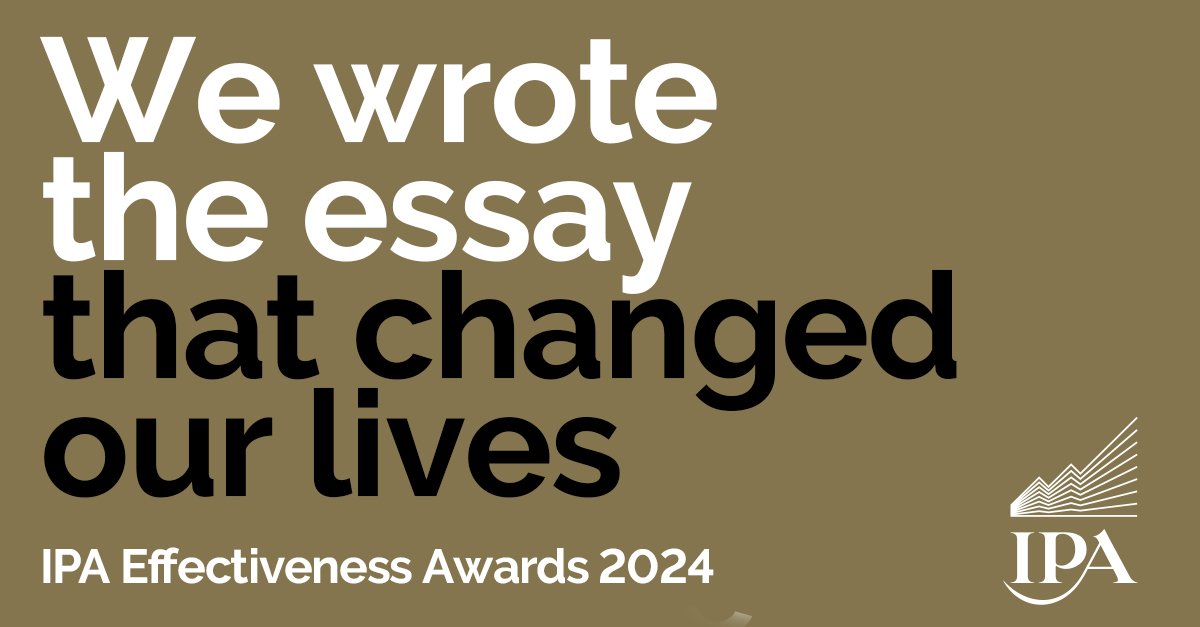The IPA effectiveness campaign is bearing real fruit. This year’s Effectiveness Awards received the highest number of nominations in thirty years, plus the highest number of awards from first-time entrants ever. And the quality of entries is if anything outpacing the quantity.
Another way of saying this is that the IPA’s multi-year emphasis on effectiveness works. It is increasingly able to show its own effectiveness. The message is getting through, and the principles they have espoused demonstrate their own truth. A living case study unto itself.
As a slightly disreputable English showman said, not once but many times, creatively yet consistently: ‘That’s the way to do it.’
Turning emotion into data… and back again
Marketing – good marketing – works. It’s an inescapable truth embedded in the story of global economics. Everyone knows it, on an almost instinctual level. How are you going to buy into a brand if you have never seen it? And why would anyone buy a brand if, on some level, they didn’t like it?
Marketing creates through visuals and messaging that sensation of familiarity, assurance and like-ness – that emotion – that overrules your rational barriers and immediate necessities and gives you permission to go out and choose where to spend your precious money and attention. It works.
But knowing this is one thing. Proving it is quite another.
Squaring that circle is one of the clearest challenges the IPA’s ongoing effectiveness campaign faces. If the emotion takes care of itself (citation needed), then the rational barriers mentioned above have an annoying habit of popping up again and again, no matter how many times you think you’ve knocked them down.
So the real and solid stuff of the effectiveness campaign is about digging up and presenting rational proof amid the hooky messages and pretty visuals. Doing so in a way that is robust (as in impervious to rational criticism, in all its ingenuity) and consistent.
If it’s true, it can take the pressure
Consistency was the key theme of one of the 2024 Effectiveness Conference’s morning highlights. Battling some highly mischievous slide transitions, System1’s Andrew Tyndall made a compelling case for the compound benefits of creative continuity for a brand’s marketing effectiveness.
If an idea is good (not as simple as it sounds), then people will like it more the more they see of it. Audiences like things they know, and good ideas don’t go stale as quickly as a panicking CMO might be tempted to think.
There is nothing like IPA effectiveness data for giving nervous CMOs confidence.
Fragmentation is a problem. Cohesion is the solution
That data helps make the argument that a strong marketing idea needs faith, investment and a steadiness of purpose to fulfil and exceed its potential. These markers of consistency are challenged by the dark side of the data, which show that going big on traditional channels is not the simple solution it might once have been. Nothing is ever simple.
Another standout morning session explored the effectiveness of creator or influencer marketing (the industry hasn’t quite settled on a name of it yet) is in many ways evolving into the space once held by linear TV, which is losing ad investment year on year, despite how effective it remains as a channel for the right brands.
Online video gives the trust and creativity of traditional telly with the speed and targeting of digital. But proving it’s effective requires longevity of vision, a consistent plan for experimentation and a data set deep enough to let you understand the nuance of what each campaign is able to achieve. So basically, it’s like any other channel – it’s just that as of today there’s less data for benchmarking effectiveness against investment.
There’s an interesting parallel with the early days of TV here. TV was only able to scale into a mass medium once advertisers realised what an effective way of selling it was. The TV channels appeared as a medium for hosting sponsors’ ads. The content produced for the TV got better as it became apparent that holding the viewer’s attention meant better returns for the advertisers.
The shows were never really the point of TV. It was the ads all along.
The message is the medium
The channels exist because of the ads, not the other way round. It’s still true. Fragmentation adds complexity into campaign planning, but the channels are only meaningful because of the stories we plan into them. Their power to share creative brand ideas is what give media channels a reason to exist. If the channel doesn’t deliver, it disappears.
This means that your idea needs to be strong, coherent and flexible enough to exist in multiple places at once. And your media plan needs to be smart enough to put it in the places your audience cares about.
But it’s you, your truth, and your creativity that’s in control.





